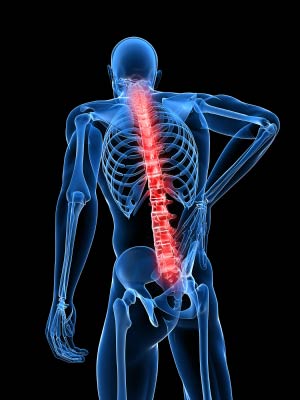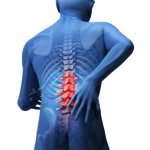Genetic Link To Chronic Lower Back Pain
Among various factors influencing the rise in back pain among people throughout the world, especially in Norway, research work has revealed a genetic link to chronic lower back pain. Although, the genes present among us are mostly the same, some variants cause an accumulation of substances within the body that presents itself as back pain. Those possessing these variant genes are more prone to chronic back pain than other people are.
The replacement of a single base pair in the DNA code by another pair results in this sort of variation. This reduces the activity of certain enzymes responsible for breaking down substances, which induces back pain. People with this variant type of gene have more long-term back pain, which become chronic, than those without it.
Besides the function of the variant gene, environmental factors such as psychological and physical workload plays an important role in chronic back pain as noted from this news article.
Genetic Link To Chronic Lower Back Pain
Debilitating spinal conditions casing chronic low back pain may often be due to genetic weakness in the spinal discs themselves
It is estimated that 60 to 80 per cent of Norway’s population experience lower back pain at some point in life. No single condition costs society more in social insurance benefits.
“After a prolapsed disc, long-term lower back pain and sciatica are all-too-familiar problems,” says Senior Researcher Johannes Gjerstad of the Norwegian National Institute of Occupational Health (STAMI). “For most people this means sick leave and greatly diminished quality of life.”
It has long been a mystery why some people develop long-term lower back pain after a prolapse and others do not. Now, findings from a research project headed by Dr.Gjerstad indicate that part of the explanation lies in our genes.
Studying the patients’ DNA, Melå Jacobsen found that they possessed different variants of a gene that can lead to the accumulation of pain-inducing substances, which in turn can make some people develop chronic pain more readily than others.
Although everyone basically has the same genes, there are many genes that come in multiple versions – an ordinary and a variant. Often this variation is caused when a single base-pair in the DNA code is substituted by another pair.
“The COMT Val158Met gene variant we’ve been studying reduces the activity of a key enzyme for breaking down substances that can induce pain,” explains Melå Jacobsen. “Patients with this gene variant had more long-term pain and poorer functionality than patients without that variant.”
Knowledge such as this will ultimately help researchers to customise prevention and treatment better.
Environmental factors significant
The researchers stress that although our genes may be a contributing factor, they do not fully account for why some people develop chronic back pain and others do not.
“What we have found is a low-impact gene variant,” points out Dr.Gjerstad, “meaning that it does not in itself lead to chronic pain. So people with an ‘unlucky’ gene variant are not necessarily fated to suffer.” Other factors also play a role, he adds, including physical and psychosocial workload.
“In a way it is good to know that the work environment also plays a part, because we can alter that. And since we know that some people are more prone to back pain than others,” concludes Dr.Gjerstad, “we need to take them into consideration and try to make sure that as few as possible become affected.”
A genetic link to chronic lower back pain has been found to play an important part in the development of chronic back pain. Variant pairs in the DNA code result in accumulation of substances causing back pain due to inactivity of certain enzymes responsible for breaking down those substances. Environmental factors have also been found responsible for chronic back pain. You might have a new excuse as to why you suffer with back pain; you can blame your parents!
Dr. Donald Corenman is one of a handful of back doctors that are both an MD and doctor of chiropractic (DC). Here he discusses the anatomy of a disc – and how genetics and design of the disc plays a part in its injury.
To find out more about back pain – get your copy of the softcover book all about getting rid of your back pain – it is available by clicking the instant access button below.
You might also like:
Tags: back pain, chronic lower back pain, genetic back pain, Genetic Link To Chronic Lower Back Pain















